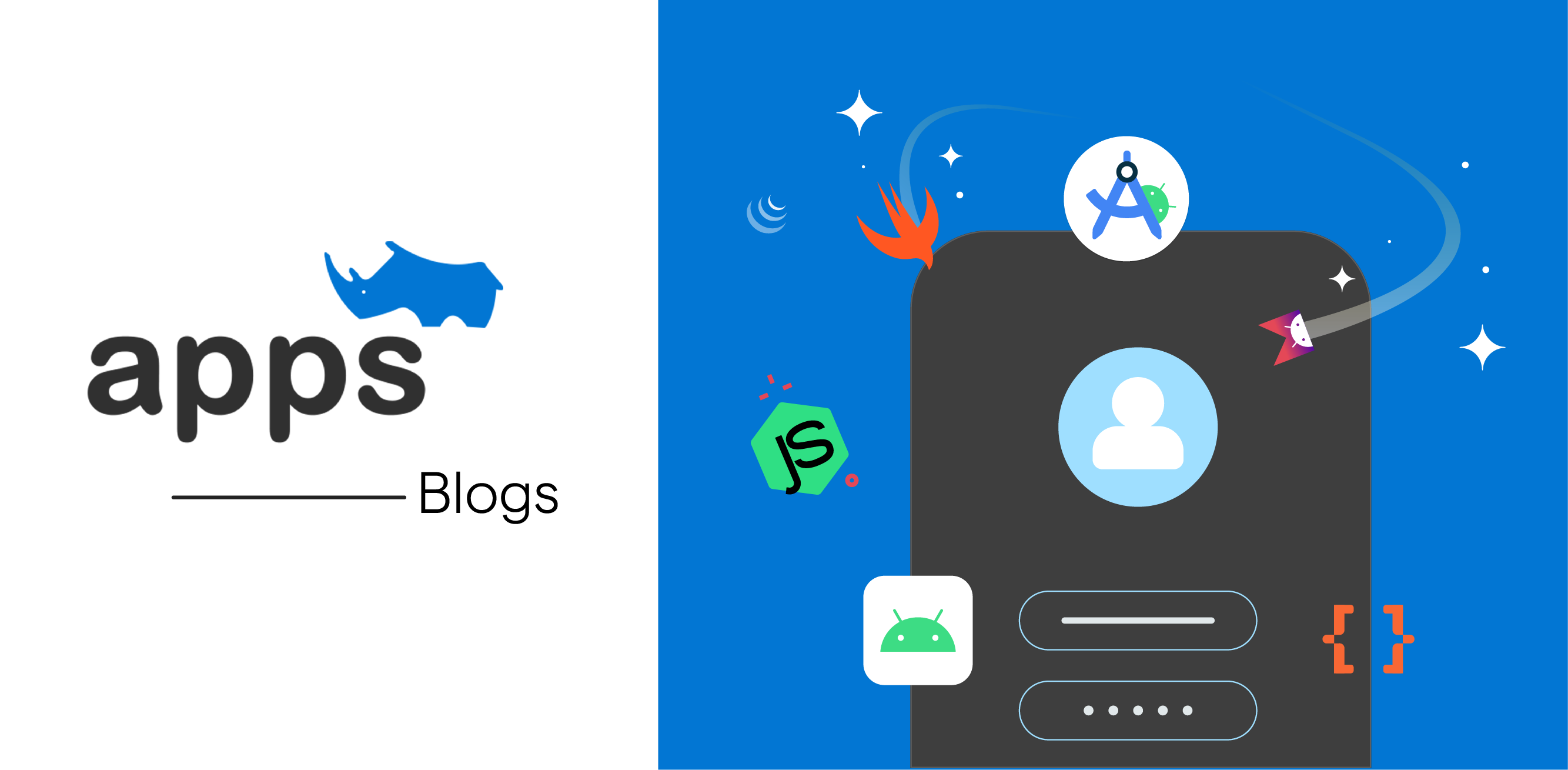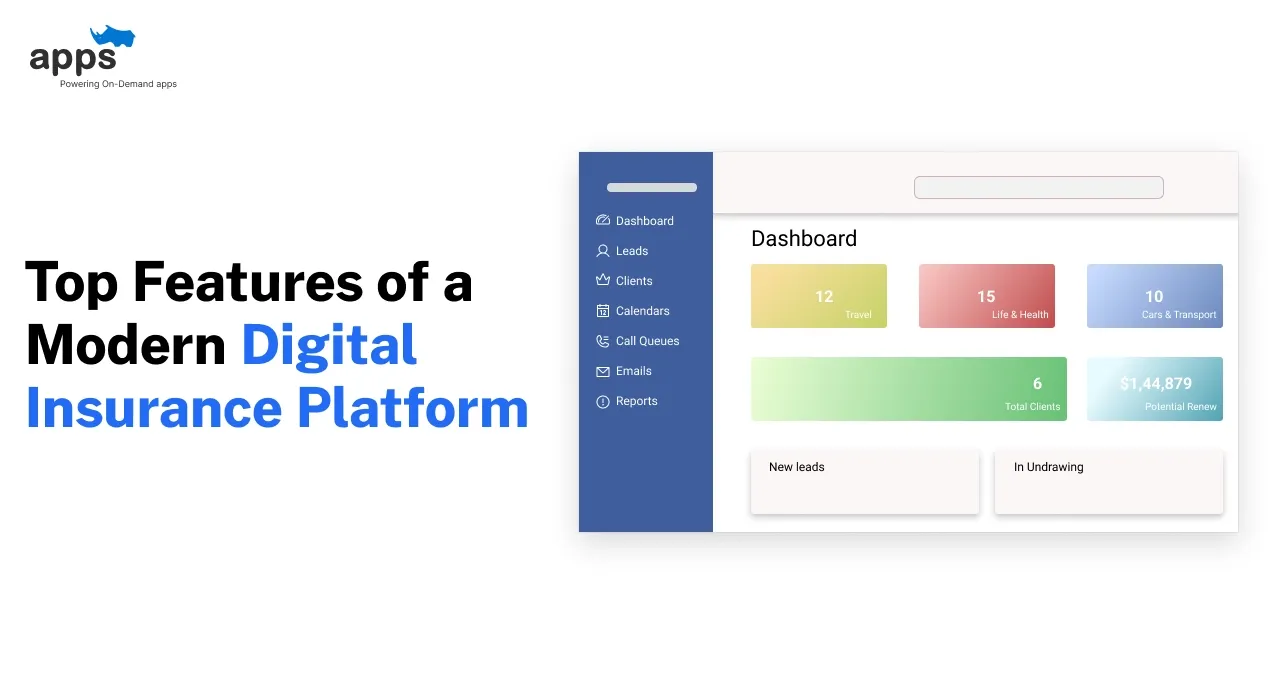- Introduction
- What Is an Online Ordering System?
- Key Benefits of an Online Ordering System for Small Businesses
- Types of Online Ordering Systems
- Selecting the Best Online Ordering System for Your Small Business
- Step-by-Step Guide to Setting Up an Online Ordering System for Small Businesses
- Top Online Ordering System Mistakes Small Businesses Should Avoid
- Online Ordering System Costs: What Small Businesses Should Expect
- Real-World Examples of Online Ordering Systems
- Final Takeaways on Online Ordering Systems for Small Businesses
- Frequently Asked Questions
Table of Contents
How to Set Up an Online Ordering System for Small Businesses
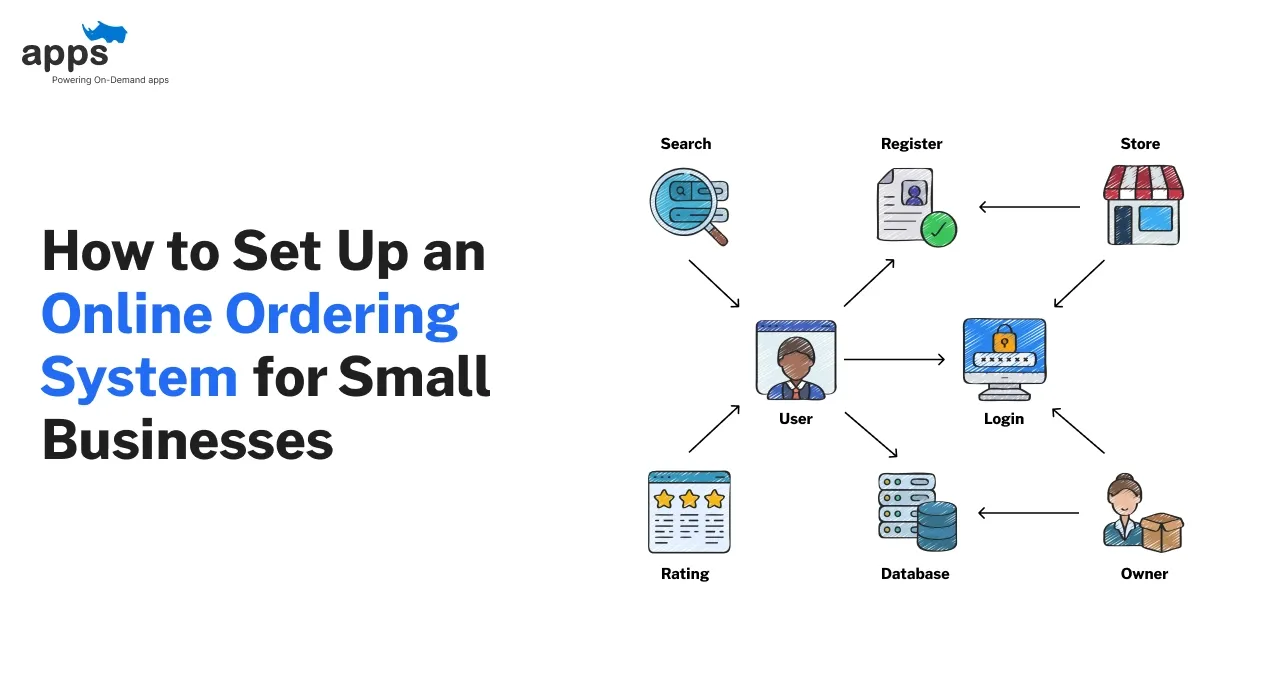
Introduction
Online ordering systems have become essential for small businesses aiming to reach more customers and boost sales.
For U.S. small retailers and restaurants, an online ordering system for small businesses is a 24/7 storefront.
U.S. digital commerce is growing fast; for example, the U.S. food delivery market was about $218 billion in 2022. (Source: Yahoo Finance)
Digital ordering is now mainstream: over half of U.S. consumers say ordering delivery or takeout is an essential part of their lifestyle, and nearly 70% ordered delivery in the last month. (Source: Escoffier)
Industry analysts note that restaurants with an online ordering system can see takeout profits jump about 30%.
Small businesses that embrace an online ordering system for small companies will cater to modern customers and gain a competitive edge.
What Is an Online Ordering System?
An online ordering system for small businesses is a software platform that lets customers browse your menu or catalog, place orders, and pay online.
At its core, it has a digital storefront (website or app) showing products and prices, an order cart, and secure payment processing. It also includes a backend dashboard where staff can view and manage orders and update inventory.
Key components include the following
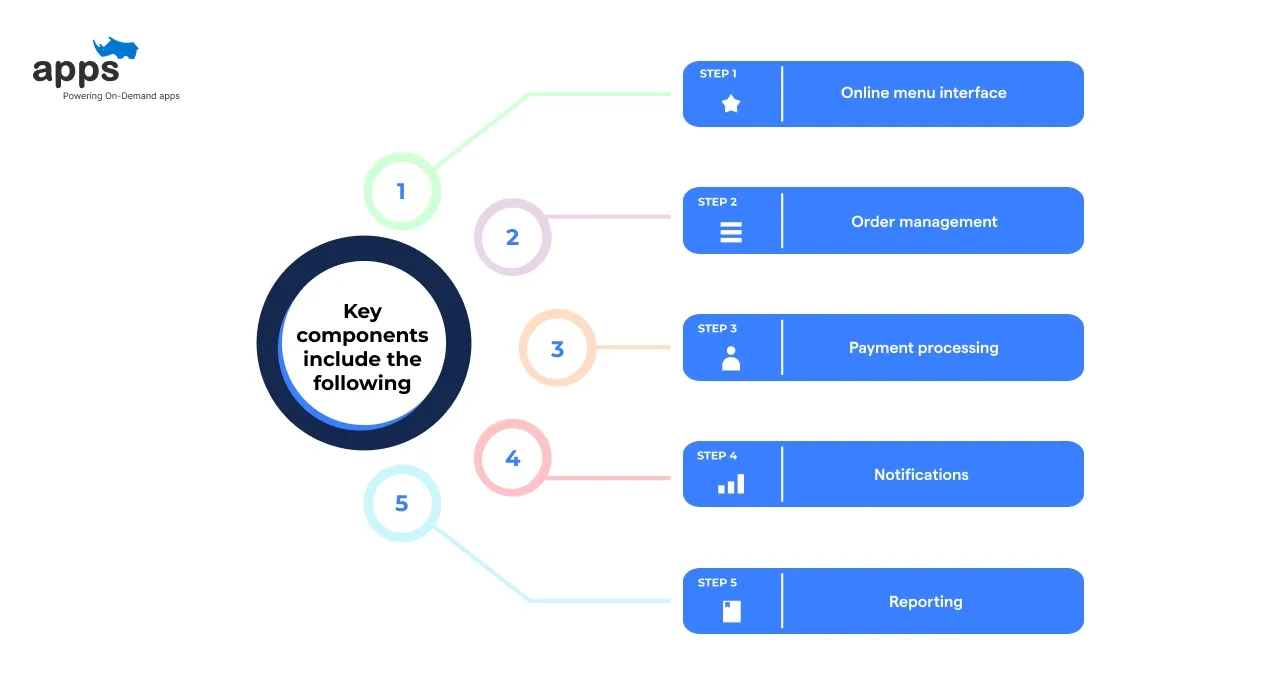
- Online menu interface: A mobile-friendly menu or catalog with item descriptions, options, images, and pricing.
- Order management: A backend system or dashboard where orders are received, tracked, and status updates are sent (e.g., “preparing” or “ready”).
- Payment processing: Integration with secure payment gateways (credit/debit cards, digital wallets) so customers can pay when they order.
- Notifications: Automatic emails or SMS to confirm orders and update order status.
- Reporting: Tools that record order data (sales, popular items, customer info) for analysis.
Basic systems may only allow customers to place orders and pay online. More advanced systems add features like inventory tracking, loyalty rewards, delivery routing, and integration with your restaurant's POS or accounting software.
For example, a custom online ordering system for a small business might include kitchen printers, delivery driver tracking, or marketing automation. In contrast, a simple system might let customers order and pay through your existing website.
Key Benefits of an Online Ordering System for Small Businesses
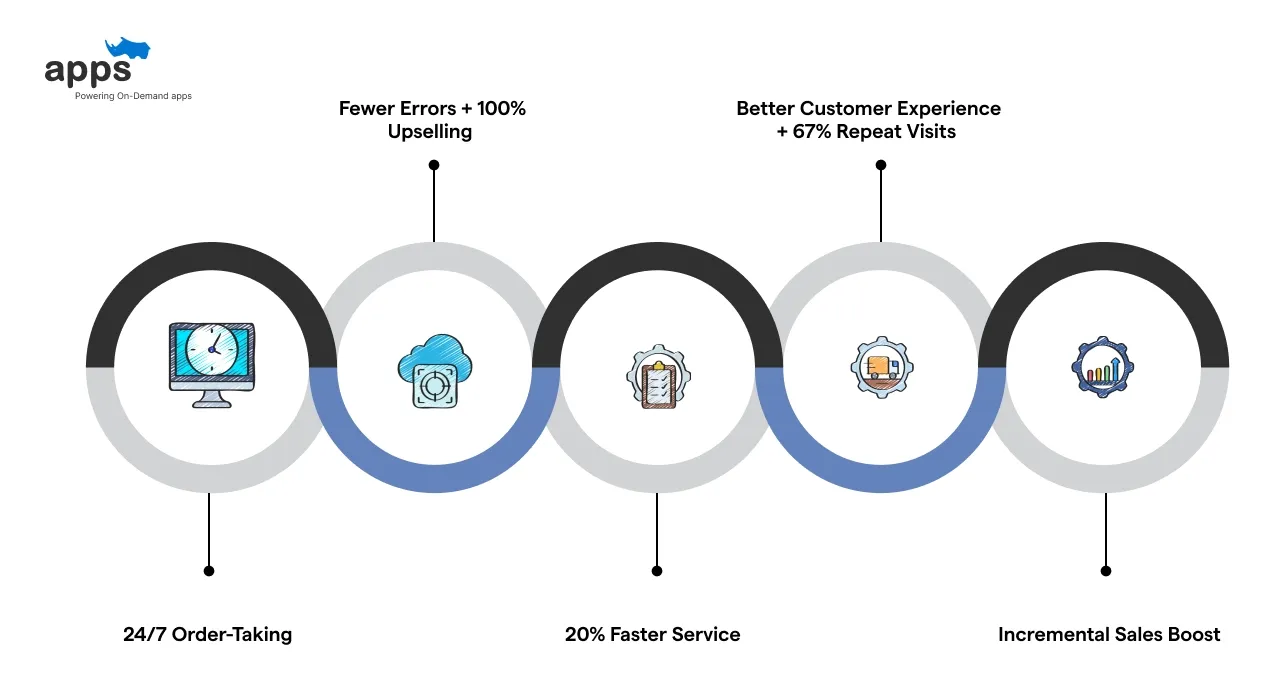
Implementing an online ordering system for a small business brings many advantages. It helps streamline operations and improves the customer experience, driving more sales and loyalty. Key benefits include:
A) 24/7 Order-Taking
With an online ordering system for small businesses, you can accept orders around the clock, even when your doors are closed.
This turns your website or app into a 24/7 storefront, capturing revenue at all hours. For example, a local cafe can keep earning by fulfilling orders in the morning or late at night without on-site staff.
B) Fewer Errors + 100% Upselling
Manual order taking (phone or in-person) often leads to mistakes. With online orders, customers pick exactly what they want, and the system records the details accurately.
Digital ordering eliminates scribbled notes and misheard instructions, resulting in fewer wrong orders and happier customers.
On top of that, AI order-taking achieved 100% upselling success, consistently suggesting add-ons like fries or bacon during every customer interaction. (Source: Forbes)
C) 20% Faster Service
Orders come directly to your kitchen or preparation area, reducing delays. Staff can prepare orders before customers arrive, speeding up pickup and delivery.
Integrated online orders and kitchen receipt systems speed up prep times. In fact, businesses often report service is 20 % faster on average compared to traditional methods.
Overall kitchen efficiency improves when orders are queued automatically.
D) Better Customer Experience + 67% Repeat Visits
An online ordering system for small businesses ensures customers enjoy a convenient ordering experience from any device. They can see clear menus, customize orders (like topping choices) more easily, and pay digitally.
A smooth online experience can improve satisfaction and build loyalty. As a result, customers who order online return 67 % more frequently than those who don’t. (Source: Fundera)
Many systems let customers save favorite orders or use loyalty points, making them more likely to return.
E) Incremental Sales Boost
A well-designed online ordering system for small businesses often increases the average order size. Customers can easily browse add-ons (e.g., sides or drinks) and combos. This boosts the total per order.
Businesses see higher sales when they give customers an easy way to order. Studies show customer spending can jump ~20–30% when they use digital ordering and payment compared to phone or in-person.
Types of Online Ordering Systems
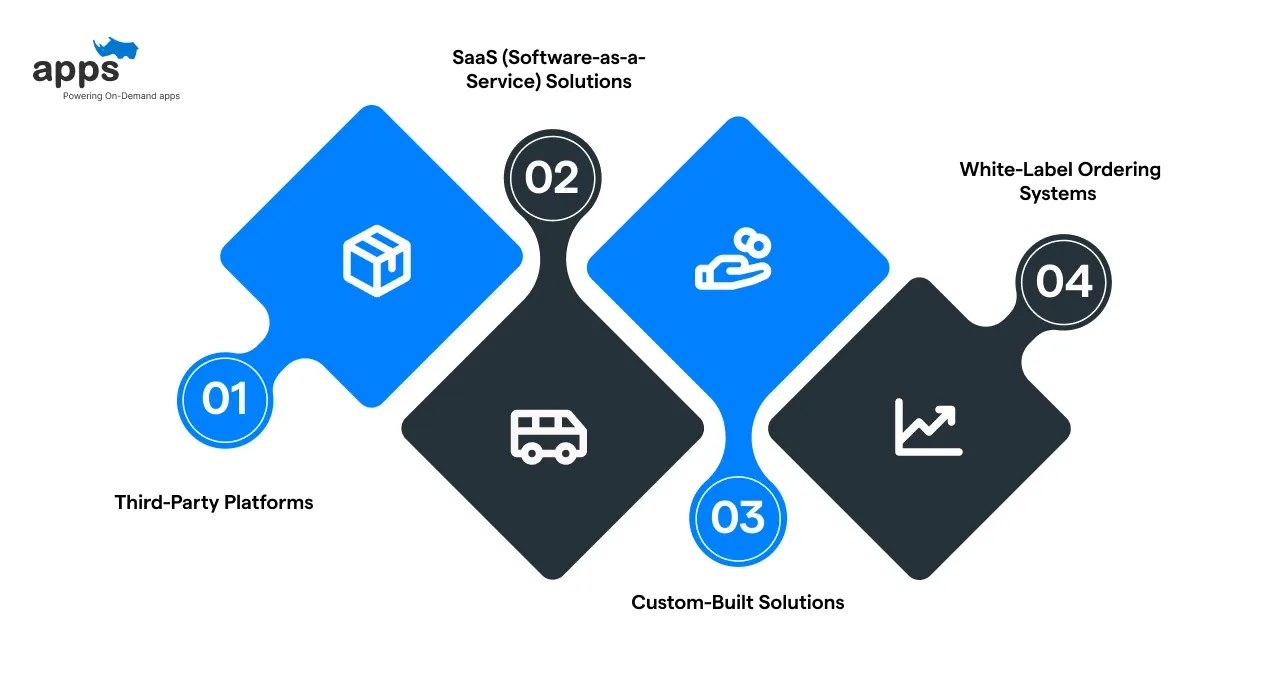
There are several approaches small businesses use to offer online ordering. Each has pros and cons.
1) Third-Party Platforms
Third-party services (like DoorDash, Uber Eats, or Grubhub) let you list your restaurant on a delivery marketplace.
- Pros: Quick setup, no development needed, and immediate access to large customer bases. You don’t have to build or maintain your ordering software.
- Cons: These platforms charge high commissions on each order and take control of the customer experience (customers order through the app, not your brand).
You also compete with many other listings.
Using a third-party online ordering system for a small business means listing your menu on another platform. You’ll get exposure and orders quickly and share revenue with the marketplace.
2) SaaS (Software-as-a-Service) Solutions
SaaS ordering systems are off-the-shelf cloud platforms to which you subscribe (often monthly). Examples include Shopify (with an ordering plugin), Squarespace, or specialized restaurant SaaS like Toast, Square Online, or GloriaFood.
- Pros: Lower upfront cost, professional interfaces, and built-in support. Many are user-friendly and update automatically.
- Cons: You pay a monthly fee (and sometimes transaction fees), and may have limited customization ability.
SaaS solutions work well for small businesses that want an easy setup without deep custom development.
3) Custom-Built Solutions
A custom online ordering system is built specifically for your business (often via a developer like AppsRhino or an in-house IT team).
- Pros: Complete control over features and branding. You can integrate deeply with your existing POS, customize the user experience, and avoid ongoing commissions.
- Cons: Higher initial cost and development time. You’ll likely pay for design, setup, and possibly ongoing maintenance.
However, a custom solution can scale with your needs and ultimately pay off if your business grows large enough.
4) White-Label Ordering Systems
White-label platforms offer ready-made online ordering software that you can brand as your own. AppsRhino provides full-scale ordering systems that allow domain branding, logo placement, features customization, preferred integrations and custom theming.
Pros: Fast launch with full branding, low-code setup, and no revenue sharing. You get a fully branded system without building from scratch.
Cons: Limited backend customization and dependency on the white-label provider’s updates and infrastructure. Also, you don’t get access to the source code since the applicationyou use the platform on a subscription basis.
These platforms Ideal for small & mid-size businesses wanting control over branding and customer experience without investing in full custom development.
No single type is “best” for all businesses. A small business might combine approaches—for example, taking orders on its website (via SaaS or custom) while listing on a delivery app to reach more customers.
Selecting the Best Online Ordering System for Your Small Business
Selecting the right online ordering system ensures smoother operations and better customer experiences. It’s important to choose a platform that aligns with your business model, service type, and budget. The right system can directly impact your order volume, delivery speed, and overall profitability.
- Budget and Pricing: When evaluating options, consider how much an online ordering system for small businesses will cost over time. Compare fixed monthly subscriptions versus per-order fees. A cheap or free system might save money upfront, but could charge high commissions.
- Service Type: Determine if you need delivery, pickup, or both. Some systems specialize in delivery routing, while others focus on in-store pickup. If you serve delivery, ensure the system handles driver assignment or integrates with couriers. For pickup-only shops (like bakeries), a simpler system may suffice.
- Integrations: Check if the ordering system for small businesses integrates with your point-of-sale, website, or accounting software. A system that syncs menu changes and sales data with your POS will save time and reduce errors. Also, marketing and loyalty integrations (email/SMS reminders, CRM sync) should be considered for a seamless workflow.
- Ease of Use: Ensure the online ordering system for small businesses is user-friendly for staff and customers. The platform should be easy to manage (adding items, updating hours) and easy for customers to use on mobile devices. A poor user experience will hurt adoption.
- Reviews & Demos: Read reviews of each online ordering system for small businesses and try demos before deciding. Reach out to other business owners or read online reviews. Test the system as if you were a customer, from browsing the menu to checking out, to ensure it works well.
- Scalability: Choose a platform that can grow with your business. An online ordering system for a small company that handles more orders and locations will save you from switching later. Look for systems with flexible plans or add-ons to add features (like catering orders) as you expand.
- Security: Ensure the platform is secure (PCI-compliant) and protects your customers’ data. A reliable online ordering system for small businesses keeps sensitive information safe, which builds trust.
Each small business has unique needs, so list your requirements first and then match them to a platform that ticks the boxes. Compare vendors carefully—take advantage of free trials and demos to see which solution feels right.
Step-by-Step Guide to Setting Up an Online Ordering System for Small Businesses
Implementing an online ordering system for a small business requires planning and testing. Here is a step-by-step setup guide.
Step 1: Define Your Requirements
Start by listing what you need for your online ordering system for a small business (menus, categories, customization options, payment methods, delivery zones, etc.).
- Decide on in-house pickup, delivery, or both.
- Understanding your needs helps you pick the right platform.
Step 2: Choose a Platform or Vendor
Select an ordering system for a small business type or a specific provider based on requirements and budget, and compare multiple solutions.
- Read reviews and ask for demos.
- Additionally, request live demos or trial versions from vendors to see how the system works firsthand and whether it fits your business needs before committing.
Step 3: Register & Configure the System
Sign up and configure the basic settings. Add your business hours, location, taxes, and fees. Create user accounts for staff.
- Set up your payment methods securely to ensure smooth transactions.
- Customize notifications to keep you and your customers informed in real time.
Step 4: Build Your Menu/Catalog
Enter all products or menu items into the system with descriptions, prices, and images. Organize items into categories (e.g., appetizers, entrees, drinks).
- Carefully configure all options and extras like toppings, sizes, or add-ons to match your menu offerings accurately.
- This ensures customers have a smooth and precise ordering experience while helping you avoid errors or confusion during order processing.
Step 5: Set Up Payments
Connect a payment gateway (Stripe, Square, PayPal, etc.) so you can accept online payments. Test the payment process to make sure customers can check out smoothly.
- Integrate a reliable payment gateway like Stripe, Square, or PayPal to process online transactions securely.
- Thoroughly test the payment flow to ensure customers experience a seamless and hassle-free checkout every time.
Step 6: Integrate Other Systems
Link any integrations like your POS, loyalty program, or delivery management tools. Enable notifications (email/SMS) for incoming orders and order confirmations.
- Connect your POS, loyalty programs, and delivery tools for smooth operations.
- Enable email and SMS notifications to keep you and your customers updated on orders.
Step 7: Test Thoroughly
Before going live, place test orders covering all scenarios (delivery and pickup). Check that orders flow correctly to your kitchen or fulfillment area. Verify receipts and confirmation messages.
- Involve staff in testing to catch any glitches. Run thorough test orders for delivery and pickup to ensure everything works perfectly.
- Involve your staff to verify order flow, receipts, and confirmation messages for a smooth launch.
Step 8: Train Your Team
Train staff on how to view and manage incoming orders in the system. Ensure they know how to update order status (e.g., “ready” or “delivered”) and troubleshoot common issues.
- Provide staff with clear training on managing and tracking orders within the system.
- Make sure they understand how to update statuses and handle common problems efficiently.
Step 9: Go Live and Promote
Launch the new online ordering system for small businesses on your website or app and inform customers about it (social media, email, in-store signage). Consider offering an initial incentive (like a discount on the first online order) to drive adoption.
- Go live with your online ordering system and spread the word via social media, email, and in-store signs.
- Boost early use by offering a special discount on customers’ first online orders.
Following these steps ensures a smooth rollout. Be patient and gather feedback so that you can make improvements after launch.
Top Online Ordering System Mistakes Small Businesses Should Avoid
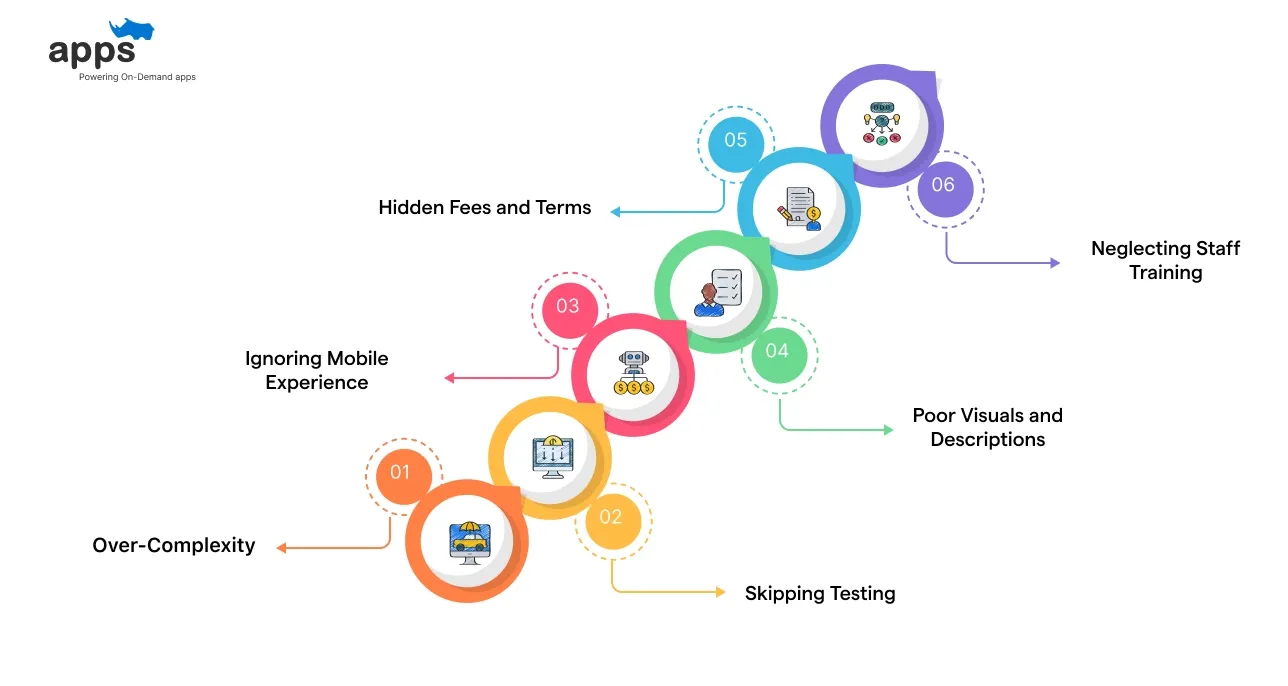
Even the best system won’t help if you fall into common pitfalls.
- Over-Complexity: Don’t choose an online ordering system for small businesses with unnecessary features you won’t use. A too-complex setup (or a cluttered menu) can confuse staff and customers. Start simple and add features later.
- Skipping Testing: Never launch without thoroughly testing your setup. Place test orders and verify every step of your online ordering system for a small business to work end-to-end.
- Ignoring Mobile Experience: Because many customers will use phones, ensure your online ordering system for small businesses is mobile-friendly. If pages aren’t easy to use on small screens, you’ll frustrate users.
- Poor Visuals and Descriptions: Use high-quality photos and clear text for your online menu. A sound online ordering system for small businesses provides a clean, professional menu layout. Bad images or typos can reduce customer trust and interest.
- Hidden Fees and Terms: Be transparent about all costs. Check contracts carefully so there are no unwanted fees in your online ordering system for small businesses (setup, monthly, commissions). Not accounting for extra fees can blow your budget.
- Neglecting Staff Training: Make sure staff know how the online ordering system for small businesses works. Untrained staff can cause delays and errors if they don’t know how to handle incoming orders or tech issues.
You’ll get more value from your ordering system by avoiding these mistakes.
Online Ordering System Costs: What Small Businesses Should Expect
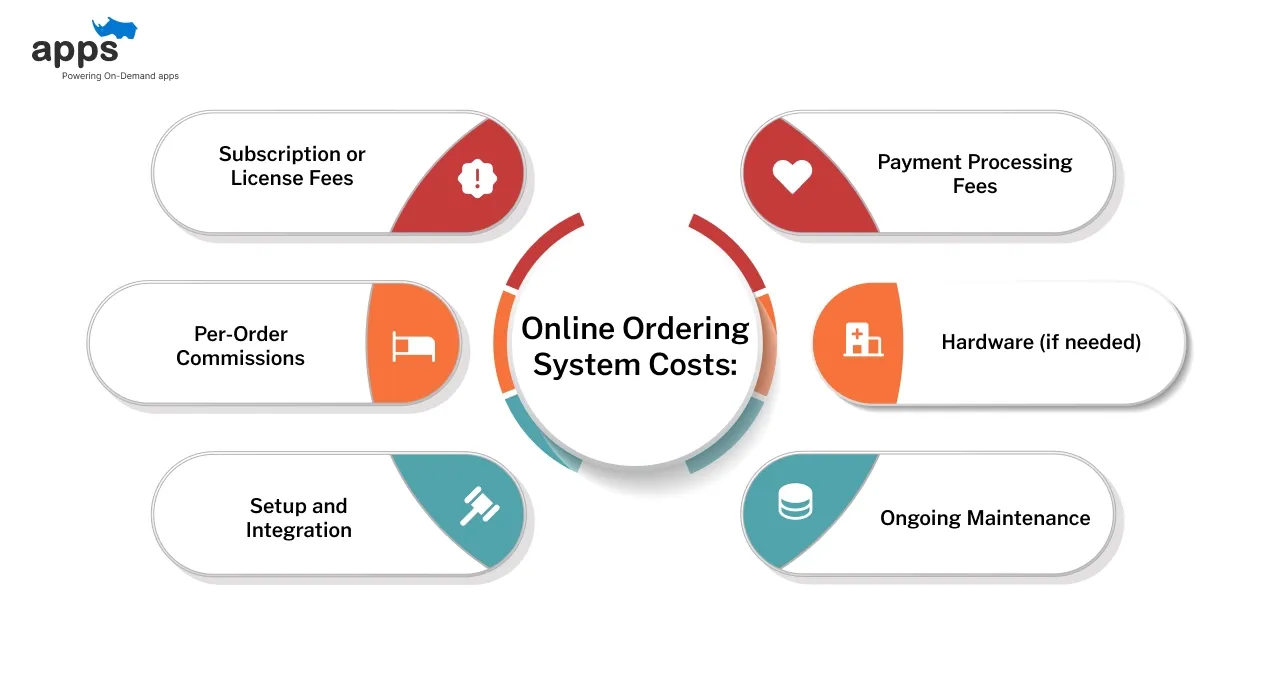
Getting an online ordering system involves more than just a monthly fee. Small businesses should factor in setup charges, transaction fees, commissions, and potential integration costs.
Understanding these expenses upfront helps avoid hidden charges and plan for long-term profitability.
- Subscription or License Fees: Many SaaS platforms charge a monthly or annual fee. Choose an online ordering system for a small business that fits your budget and order volume. Depending on features, costs can range from modest ($20–$50/month) to several hundred.
- Per-Order Commissions: If you use a marketplace or aggregator, expect commissions (often 10–30% of each order). Factor these into your budget, as commissions can add up quickly for each online ordering system for a small business order.
- Setup and Integration: There may be one-time setup charges for custom design, website integration, or data migration. A custom online ordering system for small businesses usually has higher upfront costs, while SaaS solutions are cheaper.
- Payment Processing Fees: Each credit-card transaction incurs a processing fee (typically ~2–3% + $0.30). Even a cheap online ordering system for a small business can become costly if its payment fees are high.
- Hardware (if needed): If you need tablets, kiosks, or printers for order receipts, include those costs. Basic tablets are inexpensive, but POS printers or cash drawers add expense.
- Ongoing Maintenance: Factor in any updates, support, or marketing costs. You may pay for tech support or future enhancements for your small business's online ordering system.
In short, weigh all costs (upfront and ongoing) when budgeting. A cheaper solution now may cost more over time if fees are high.
Real-World Examples of Online Ordering Systems
Several small businesses have seen considerable success after adding online ordering. Here are the top 3 examples for you to learn from.
Case Study 1: Ollie’s Noodle Shop
Problem: As a family-owned restaurant, Ollie’s faced rising third-party delivery fees cutting into margins.
Solution: They partnered with a direct online ordering platform to manage orders and avoid commissions.
Results: The restaurant saved over $2 million in commission fees and saw repeat orders grow by 108%.
Case Study 2: Mr. Pickles Sandwich Shop
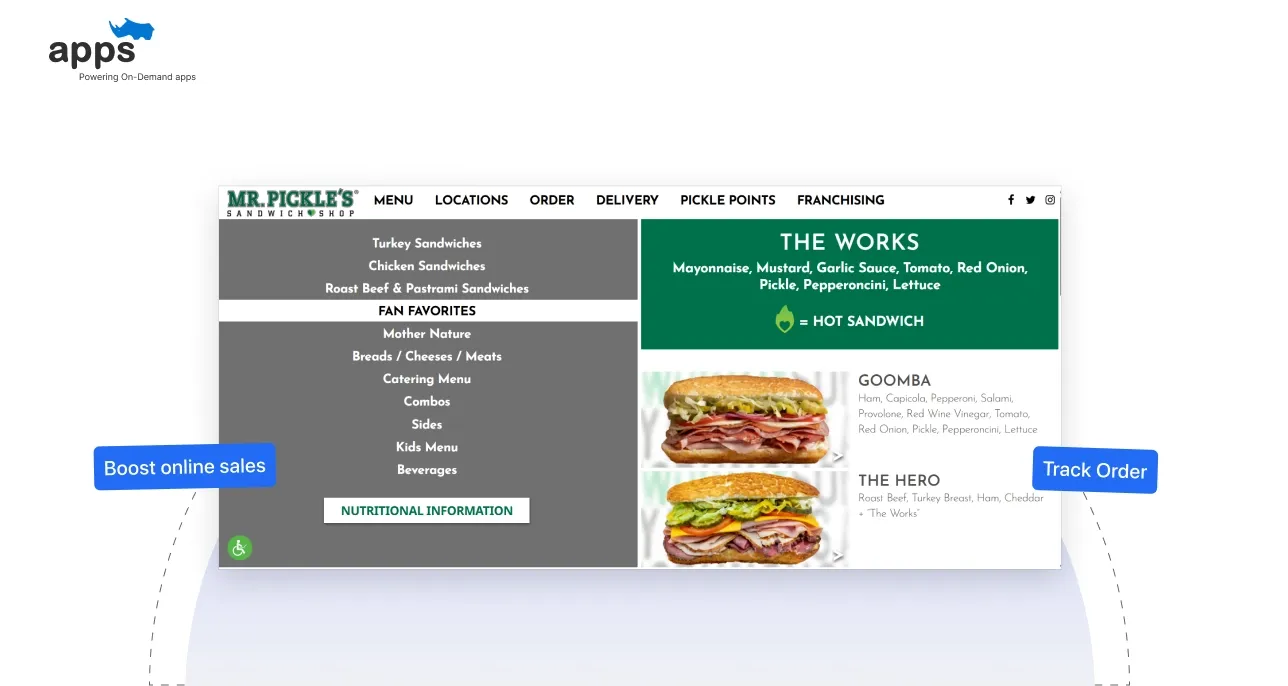
Problem: Mr. Pickles needed a better way to boost online sales and retain loyal customers.
Solution: They launched a branded mobile ordering app with built-in loyalty rewards for direct orders.
Results: Online sales doubled, with first-party orders reaching 42% of total shop sales.
Case Study 3: Twice Daily Convenience Store
Problem: The store chain wanted to increase fresh-food sales and improve repeat customer engagement.
Solution: They launched an online ordering app featuring loyalty perks for fresh-food orders and promotions.
Results: Overall sales rose by 225%, and average monthly order size grew by 55%.
These cases show owners can unlock significant growth and efficiency with the right online ordering system for small businesses.
Suggested Reading: Online Food Ordering System: 101 Guide
Final Takeaways on Online Ordering Systems for Small Businesses
Small businesses that embrace digital ordering gain a competitive advantage. An effective online ordering system for small companies improves customer convenience, reduces errors, and opens new revenue streams.
You can increase sales and streamline operations by carefully choosing and setting up a system. When you’re ready to launch or upgrade your ordering platform, consider partnering with a specialized provider.
For example, AppsRhino offers custom on-demand apps for grocery, food, alcohol, and other delivery needs. Whether you're running a single store, a multi-store chain, or an aggregator platform, AppsRhino can build tailored apps for all user roles—including admin, drivers, customers, and shops.
Key features offered by AppsRhino include:
- Branded customer app with order tracking
- Admin dashboard with real-time analytics
- Integrated payment gateway and receipts
- Custom themes and multi-language support
- Loyalty programs and promo code modules
- Driver app with optimized delivery routes
- Store panel for managing menus/inventory
- Support for multi-store and aggregator setups
Their team can build a tailored online ordering system for small businesses that fits your needs. Contact AppsRhino to start the process and get support at every step.
Frequently Asked Questions
What features should I look for in an online ordering system for a small business?
Look for easy menu management, secure payment gateways, mobile compatibility, real-time order tracking, and integration with POS systems to ensure a smooth customer and staff experience.
How much does an online ordering system for a small business typically cost?
Costs vary based on subscription fees, setup charges, and payment processing fees. Choose a system that fits your budget but offers reliable features to help grow your business effectively.
Can small-business online ordering systems integrate with my POS?
Many online ordering systems for small businesses offer seamless integration with POS and other tools, helping streamline order management and reduce errors in your daily operations.
How does an online ordering system for small businesses improve customer experience?
It provides 24/7 ordering, faster service, accurate orders, and multiple payment options, making the buying process convenient and enjoyable, which boosts customer satisfaction and loyalty.
What are the common challenges when setting up an online ordering system for a small business?
Common issues include complex setup, neglecting mobile users, insufficient testing, poor menu descriptions, and hidden fees that can disrupt smooth operations and frustrate customers.
Table of Contents
- Introduction
- What Is an Online Ordering System?
- Key Benefits of an Online Ordering System for Small Businesses
- Types of Online Ordering Systems
- Selecting the Best Online Ordering System for Your Small Business
- Step-by-Step Guide to Setting Up an Online Ordering System for Small Businesses
- Top Online Ordering System Mistakes Small Businesses Should Avoid
- Online Ordering System Costs: What Small Businesses Should Expect
- Real-World Examples of Online Ordering Systems
- Final Takeaways on Online Ordering Systems for Small Businesses
- Frequently Asked Questions


